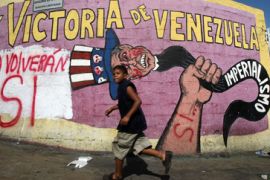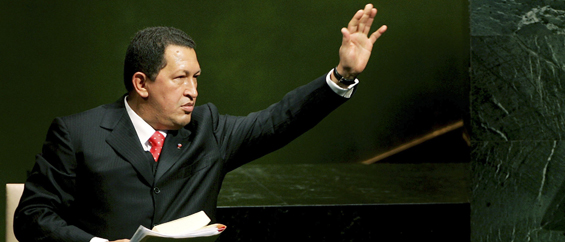Mending fences with Latin America
Will a new US administration repair relations with its southern neighbours?

 |
| Venezuela’s Hugo Chavez has been a vocal critic of US policy in the region [GALLO/GETTY] |
Congratulations on the historic US election result have been rolling in for president-elect Barack Obama from both friend and foe alike.
There was even a note from Hugo Chavez, Venezuela’s president, who is better known for insulting the occupant of the White House.
Like many Latin American leaders, he expressed the hope that an Obama administration would work to improve relations with the region.
Yet he summed up the significance of the electoral victory by claiming that it “is a sign that the era of change which has taken root in South America could be reaching the doorstep of the United States”.
It was a fair point.
Over the last two years, Latin America has seen a priest-turned-politician end 60 years of single-party rule in Paraguay, the first indigenous president in Bolivia, and Chile elect its first woman as head of state.
‘Leftward trend’
What has become known collectively as a “leftward trend” is the result of varying and distinct historical circumstances involving very different personalities.
| In depth | ||||||||||||||

Focus
Videos
Your Views
|
It is a dynamism that has also produced new multilateral institutions, such as the Union of South American Nations, whose debut was a key diplomatic intervention in the Bolivian constitutional crisis.
At a vital moment, it managed to bring together countries as politically diverse as Venezuela and Colombia to express a commitment to the territorial integrity of Bolivia, and the legitimacy of its democratic processes.
It undoubtedly played an important role in preventing the crisis from degenerating further.
Washington was notable for its absence.
Many of the changes are seen as a referendum on US policy towards the region, in particular the aggressive peddling of programmes of economic liberalisation known as the “Washington consensus”.
The response from the north has often been clumsy and petulant, with the American ambassador to Bolivia even intervening publicly in the presidential campaign by announcing that the election of Evo Morales would damage relations with the United States.
He turned out to be prescient, if undiplomatic.
A domestic prism
The current economic crisis has disproved any notion of an economic “de-coupling” between the US and Latin America, but a strong argument could be made for a political “de-coupling”.
Distracted by two wars, there has been little time for Washington to look south, and the traditional unilateral stance has been further aggravated by the Bush administration’s approach over the last eight years.
When Latin America does make it onto the radar, it is viewed through the prism of US domestic issues.
Despite one third of the US population – and growing – tracing the region as their origin, the popular perception of it is still dominated by the twin spectres of illegal drugs and immigration.
Hispanics, who now constitute the largest minority in the US, have become more vocal and visible, but this is not a change that has been universally celebrated.
The continued demographic shift, coupled with economic uncertainty, has produced a hysterical discourse about immigration.
It can be heard nightly on cable news, and there can be no mistaking that it is directed south.
Before the economy fully plunged, it threatened to become the major theme of the US presidential campaign.
It did, however, produce one of the more dramatic unilateral acts of the current US administration: the decision to build a fence along the US’ southern border.
Fencing borders
With 2,000 miles of terrain to cover, it clearly has more symbolic than practical value.
As a political solution, fences have an unhappy history, and they mean very different things depending on which side you end up.
 |
| The US has long been seen as a unilateral actor in the region [GALLO/GETTY] |
More than a sign of US solipsism, seen from the South it is also a rejection of the possibility of multilateral solutions.
The more sinister subtext is that the fence is a last ditch barrier against the region’s cultural influence that is steadily, irreversibly, changing US society.
Unlike the Iraq war, President-elect Obama voted for the fence, a move that runs contrary to the global perception that his personal history will make him less blinded by difference and more conciliatory by nature.
A common refrain from Latin American leaders, with the exception of Colombia – one of the few who stands to lose from a change in US policy – has been that neither the fence nor the billions of dollars spent on counternarcotics has done anything to staunch the US appetite for illegal drugs and cheap labour.
The region has lobbied for a policy that recognises the importance of this economic demand, and develops a multilateral solution for a shared problem rather than-all out war on the supply.
There is hope that promises made by the Obama campaign of finding common ground will stretch beyond the borders.
Hope that, once in office, president Obama will have the time to look south and focus beyond the fence, to recognise the same circumstances, animated by the desire for change that propelled him to the White House.
